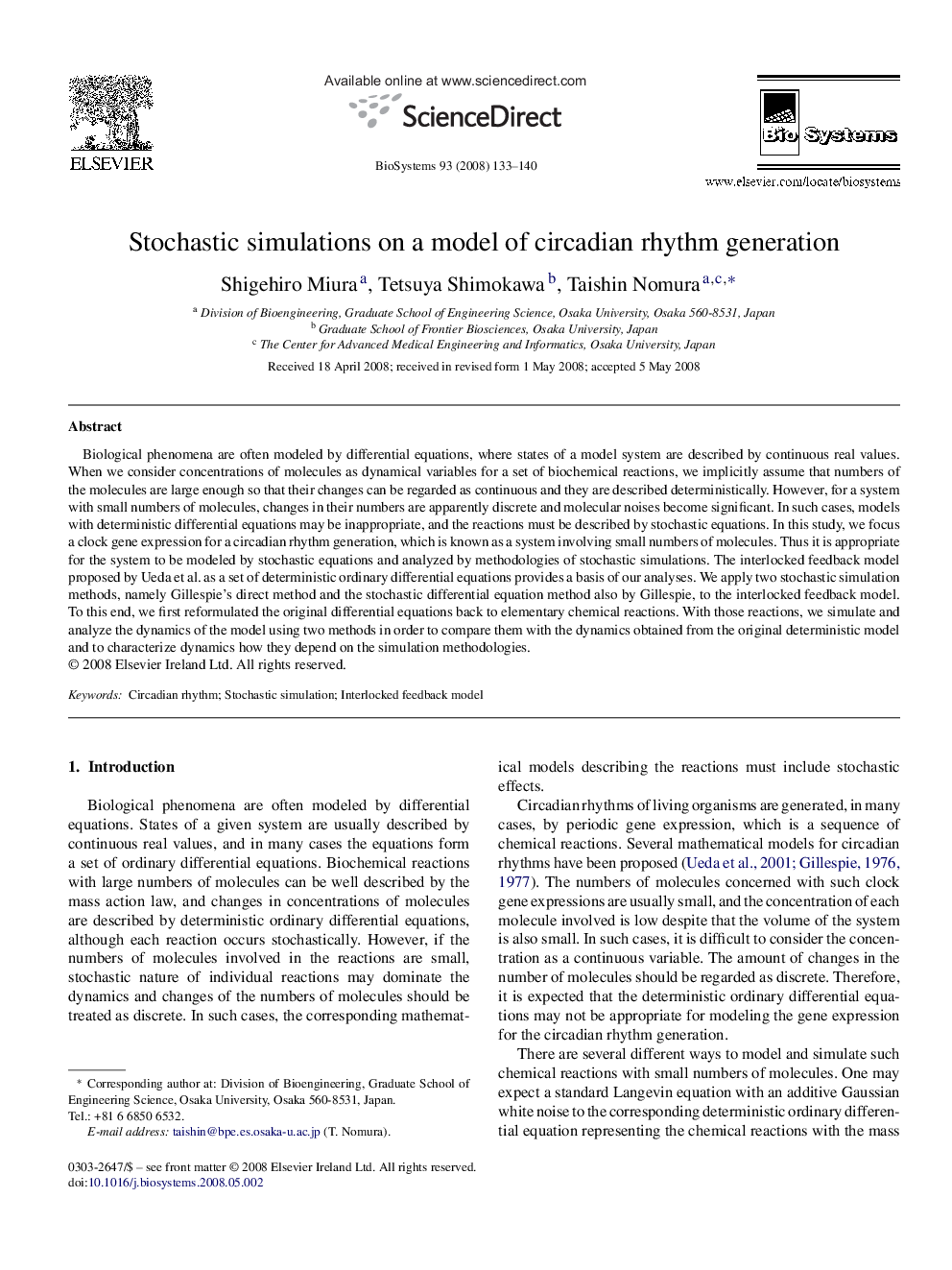| Article ID | Journal | Published Year | Pages | File Type |
|---|---|---|---|---|
| 2076774 | Biosystems | 2008 | 8 Pages |
Biological phenomena are often modeled by differential equations, where states of a model system are described by continuous real values. When we consider concentrations of molecules as dynamical variables for a set of biochemical reactions, we implicitly assume that numbers of the molecules are large enough so that their changes can be regarded as continuous and they are described deterministically. However, for a system with small numbers of molecules, changes in their numbers are apparently discrete and molecular noises become significant. In such cases, models with deterministic differential equations may be inappropriate, and the reactions must be described by stochastic equations. In this study, we focus a clock gene expression for a circadian rhythm generation, which is known as a system involving small numbers of molecules. Thus it is appropriate for the system to be modeled by stochastic equations and analyzed by methodologies of stochastic simulations. The interlocked feedback model proposed by Ueda et al. as a set of deterministic ordinary differential equations provides a basis of our analyses. We apply two stochastic simulation methods, namely Gillespie's direct method and the stochastic differential equation method also by Gillespie, to the interlocked feedback model. To this end, we first reformulated the original differential equations back to elementary chemical reactions. With those reactions, we simulate and analyze the dynamics of the model using two methods in order to compare them with the dynamics obtained from the original deterministic model and to characterize dynamics how they depend on the simulation methodologies.
